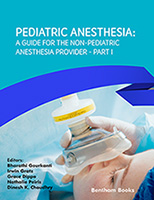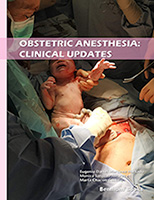I have often used the quote, attributed to my dear friend, the late Alon P. Winnie, one of the ”Founding Fathers” of the American Society of Regional Anesthesia, that “regional anesthesia is nothing more than applied anatomy.” This quote and approach to regional anesthesia has been the foundation of much of my career as a military anesthesiologist. I was therefore flattered and enthusiastic when my friend and colleague, André P. Boezaart, MD, PhD, asked me to provide a forward to this masterful work, “The Anatomical Foundations of Regional Anesthesia and Acute Pain Medicine.”
André and I have both turned to the potential of regional anesthesia in time of war to provide safe, compassionate, and logistically sound anesthesia and analgesia to soldiers wounded in combat. André served in the South African Defense Force in 1975 during the Angola War as the only anesthesiologist for the Forward Surgical Unit. Clutching a worn copy of Daniel Moore’s 1967 4th edition textbook, “Regional Block,” he quickly applied the lessons therein to many war casualties in long operating room sessions. In an effort to improve efficiency and avoid repeated axillary blocks for soldiers with upper extremity wounds that required further surgery or dressing changes, André performed axillary artery cut-downs and then passed central line catheters cephalad next to the artery to where the plexus crosses the first rib to provide continuous access to the brachial plexus for re-block and continuous analgesia of the arm. These catheters would remain in place for weeks and were used for frequent dressing changes and debridements common to war wounds. André’s experience likely represents the first utilization of a continuous peripheral nerve block during war. Many years later, in 2003, employing far better equipment and the same love of anatomy, I would place the first continuous peripheral nerve block in a United States soldier evacuated from Iraq after sustaining near fatal injuries that included a traumatic amputation of his left leg below the knee. As in André’s experience, these continuous regional techniques provided excellent operating room anesthetic conditions, remarkable perioperative analgesia, and greatly enhanced the wounded soldiers comfort during long evacuation flights without the nausea and respiratory depression associated with the exclusive (and at the time far too common) use of morphine for pain management. I am pleased to say that regional anesthesia and continuous nerve blocks are now routine practice in American military and civilian medicine. There are few situations in medical practice that are more unforgiving and difficult than the management of polytrauma casualties in austere battlefield conditions. The “discovery” of the utility of regional anesthesia by two (much younger at the time) anesthesiologists on two very different battlefields, separated by decades, is a testimony to the power this technique affords the anesthesiologist willing to invest the time necessary to acquire the essential anatomical knowledge required to apply these techniques safely, successfully, and consistently.
It is against this background that André has produced an anatomical text that focuses on the macro-, micro-, sono-, and functional anatomy that is vital for success in the field of regional anesthesia and acute pain medicine. So much of our teaching was, and regrettably still is, focused on how to find the nerves (ultrasound, nerve stimulation, paresthesia), and by far not enough on where these nerves are and what tissues and membranes surround them. This book gives equal weight to all three of these matters. The anatomical focus and approach to regional anesthesia provided in this text is refreshingly unique and much needed. Certainly, ultrasound technology in regional anesthesia has been revolutionary in terms of our ability to place needles and deposit local anesthetics in appropriate spaces around target nerves. Unfortunately, some have leaned too heavily on this technology as a crutch to overcome a poor grasp of basic anatomy. I predict that, like André’s worn copy of Daniel Moore’s “Regional Block” saved the lives and reduced suffering of many hundreds of wounded soldiers during the 1975 Angolan War, “The Anatomical Foundations of Regional Anesthesia and Acute Pain Medicine” will become a cherished companion of countless anesthesiologists who desire the virtues of regional anesthesia and understand that they must apply these foundations safely and with the confidence that is borne from a detailed knowledge of human anatomy.
It is my great honor to be the first to congratulate André Boezaart on this masterful effort that is the product of, and was inspired by, a truly remarkable career in anesthesiology. André does all of us, new and old acute pain specialists and regionalists alike, a great service with this refreshing look at the modern practice of regional anesthesia and acute pain medicine based on the timeless application of gross human anatomy, also now studied through modern microscopic lenses, by ultrasound beams and defining the nerve functions with electrical stimulation – macro-, micro-, sono- and functional anatomy.
Chester 'Trip' Buckenmaier III, MD COL (ret), MC, USA
Program Director,
Defense and Veterans Center for Integrative Pain Management (DVCIPM.org)
Professor Anesthesiology,
Department of Military Emergency Medicine,
Uniformed Services University, USU '92





